When I was in fifth grade, I lived a normal boyhood in a small town in Western Pennsylvania. There, everyday, we would sit at a formal dinner that our mothers had prepared for us. My mother would cook roasts, and other fare that varied from Chicken to fish, and all manner of vegetables as sides.
Being a traditional household, my father sat at the head of the table, with my mother at the other end, and us kids sat in the middle.
Now for some reason, my father was stressing out at work for some reason or the other, and today’s story is about how it manifested when he came home.
He, in a completely asshole move started to pick on me (as I was the oldest son), and started to accuse me of blinking my eyes too much.
Yeah. I’m what? Nine years old.
He’d scream at me at the dining table “Stop blinking your eyes”! Or if I was reading a book in the living room, or watching television. Or riding my bicycle. I must have heard that demand “Stop blinking your yes” over ten thousand times.
Anyways…
Long story short. Eventually he stopped accusing me. And I learned to stay hidden from him. As an older man, I can now clearly see that he was under stress and neuroses were developing, but at that time, I just “took it”.
As we get older, we view our past experiences with the eyes of experience, and learn what is good and what is bad, in ways that we can understand and learn from.
Let’s get on with today’s post…
Meme’s about the United States are everywhere…

Unlocking the Secrets of the Holloways: An Exploration of England’s Sunken Labyrinths
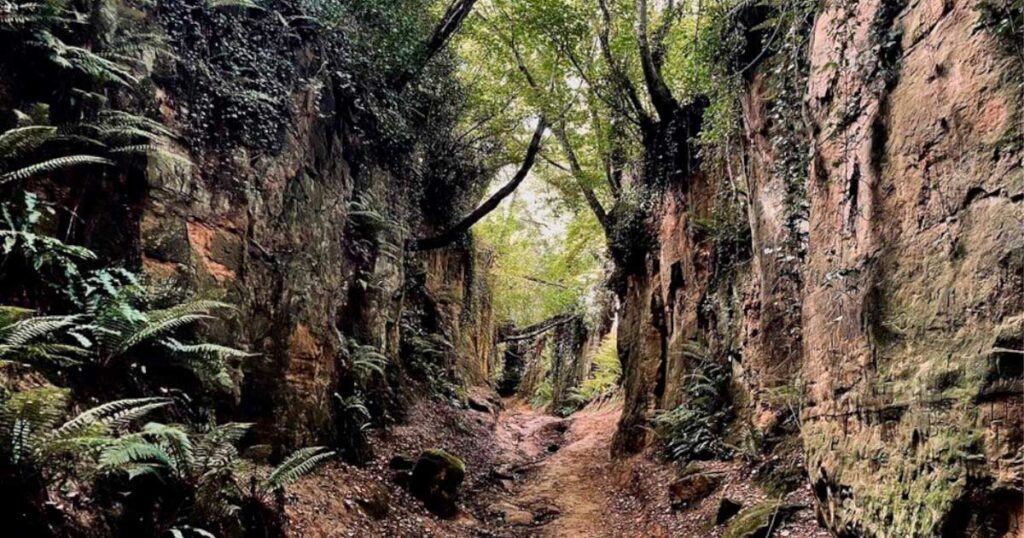
Natural England is embarking on a journey to uncover hidden gems known as holloways tucked away in the English countryside. These paths, also known as sunken lanes, have a rich historical and cultural value that is waiting to be discovered.
According to the BBC, experts are conducting 3D surveys at Shute’s Lane, a picturesque holloway near Bridport in Dorset, on the south coast of England. They are also studying the 300-year-old Hell Lane, a path that winds its way through Symondsbury and North Chideock. The goal is to create a map that will showcase the locations of these mysterious sunken lanes all across the UK.
What is a Holloway?
A holloway is tunnel-like road, lane, or path that has become naturally sunken over centuries of repeated use. According to Atlas Obscura , in some places, the holloways in Dorset have receded as much as 20 feet below the land on either side.
The pathway is typically surrounded by tall trees that grow out of the banks on either side. They may have intertwined their branches forming a canopy over the road, creating the appearance of a tunnel through the dense foliage.
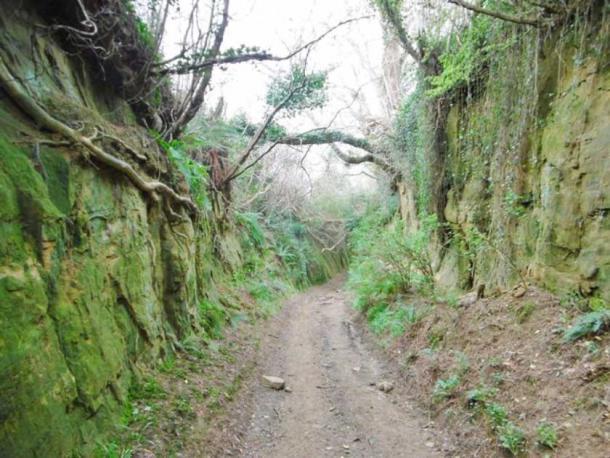
Hell Lane, near Symondsbury, Dorset. (Mike Faherty / CC BY-SA 2.0 )
The Long History of Sunken Roads
The English name “holloway” is derived from the Old English “hola weg” meaning a sunken road. Many of these ancient paths date back centuries, with some dating as far back as Roman times or earlier, with an age range of 300 to 3,000 years old. Holloways can be found all over the world and are often considered to be important cultural and historical landmarks.
The tunnel-like paths are formed over time by the movement of people, animals and carts along routes with soft ground, which causes the path to become deeply indented or “sunken” into the surrounding landscape.
Today, most holloways are no longer in use due to their narrow width and slow pace, which makes them unsuitable for modern modes of transportation. Additionally, they are too deep to be filled in and repurposed for farming. As a result, these paths have become a labyrinth of wildness, surrounded by heavily farmed countryside.
In England, most of these sunken lanes have become overgrown with nettles and briars, making them impassable and unexplored for decades. They offer a unique and integral part of the English landscape, providing a glimpse into a time long gone.
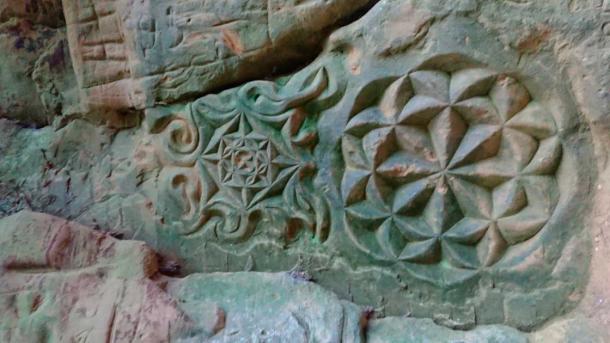
Holloways have been used for centuries, and many feature carvings. (Natural England)
Ancient Holloway ‘Graffiti’
These paths are not only steeped in history but are also adorned with ‘graffiti’ carved into their banks, depicting ghouls, gargoyles, and Celtic patterns that add to their allure. The carvings hint at a deeper purpose to the pathways – some experts maintain they were not only used as transportation routes, but also as sacred pathways, which were believed to have spiritual or magical properties.
Digitizing the Magic of Holloways
The 3D survey will provide detailed measurements and create a digital visualization that captures the mystery and magic of these holloways. Mr. Jefferies said, “Nobody knows the full extent of them right across the UK – so we are trying to collect them and create this map.”
The initial project is set to be completed by the end of March and a report of the findings will be published through Natural England. But you don’t have to wait until then to get involved, Natural England is inviting you to share pictures and details of your local holloways via Twitter using #sunkenpaths.
Man Dresses Up Every Sunday To Take His Grandmother To Church

By now most of the legends have already been debunked and sorted out. Except maybe for the one of the mysterious Sunday Man from Baltimore, Maryland.
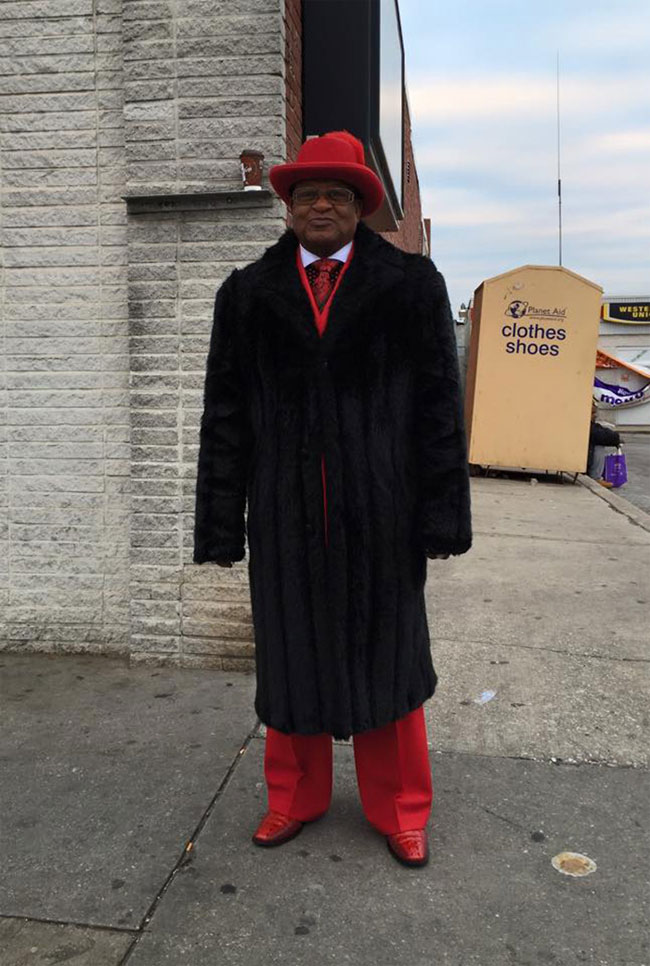









OH SH*T, all the EGGS are disappearing
In the United States…
Ambassador Says U.S. WILL ALLOW Allies to Give F-16’s to Ukraine
The USA will support the transfer of F-16 fighter jets by allies to Ukraine – the American ambassador to the OSCE. Michael Carpenter, confirmed today.
Washington will agree with the idea of partners to transfer F-16 fighter jets to Ukraine.
Answering the question whether the administration of US President Joe Biden is ready to allow the Netherlands to supply Ukraine with F-16 fighter jets, the ambassador said: “We have long been of the opinion that what our allies supply is their business. And we support the countless contributions (to defense) that our allies have made for Ukraine.
This has been true from the very beginning of the war, when we discussed legacy Soviet systems, to the present period, when we discuss main battle tanks and more sophisticated air and missile defense capabilities and systems. And so I expect there will be broad support in the United States for our allies to continue to increase their contributions,” Carpenter said.
Earlier it became known that the Netherlands is ready to consider the transfer of F-16 fighter jets to Ukraine, if a request comes from the Ukrainian authorities.
At the same time, during an address to the participants of Ramstein meeting, Volodymyr Zelenskyy called on the partners to discuss the possibility of sending the F-16 at the next meeting.
Beef and Mushroom Casserole

Ingredients
- 1 pound lean ground beef
- 1 (5 1/2 ounce) package risotto mix with garden vegetables
- 1 1/2 cup sliced mushrooms
- 1 cup chopped red bell pepper
- 2 cloves garlic, crushed
- 1/2 teaspoon salt
- 1/4 teaspoon pepper
- 2 tablespoons grated Parmesan cheese
- 1 tablespoon chopped fresh basil
Instructions
- Prepare risotto mix according to package directions.
- Meanwhile in large nonstick skillet, brown ground beef, mushrooms, bell pepper and garlic over medium heat 8 to 10 minutes or until beef is no longer pink, breaking beef up into small crumbles.
- Pour off drippings.
- Season with salt and pepper.
- Stir risotto into beef mixture.
- Sprinkle with cheese and basil.
Yield: 4 servings
Alternative instructions
- 700g braising or stewing beef, cut into chunks
- 2 tbsp sunflower oil
- 2 onions, thinly sliced
- 2 tsp dried mixed herbs
- 2 tbsp plain flour
- 150ml red wine
- 450ml beef stock
- 1 bay leaf
- 2 tbsp tomato puree
- 3 carrots, peeled and cut into chunks
- 300g forest mushrooms, sliced
- Salt and pepper
- Handful of chopped flat leaf parsley to garnish
First
Get things moving by preheating your oven to 180C, and really seasoning your beef chunks well with salt and pepper. Heat half the oil in a large frying pan, and brown your beef in batches for 2-3 minutes. Transfer the meat to a stew or casserole dish.
Second
Add the remaining oil, and soften the onions over a medium heat for 5 minutes. You want them to be lightly browned before you remove them, add them to the casserole dish, and sprinkle them with the flour and the herbs.
Third
Into the casserole dish goes the red wine, the stock, the bay leaf, and the tomato puree. Stir it all well, and place on the hob. Cook over a medium heat until you get to a gentle simmer, then transfer to the oven, and continue to cook covered for 1.5 hours.
Fourth
Once 1.5 hours have passed, remove the casserole from the oven, and stir in the carrots and forest mushrooms. Season again to taste, then cook for a further 45 minutes. Serve with mashed potato and your favorite greens.
French Video
This 30 minutes long video (in French but English subtitles are available) is simply miraculous.
A Frenchman capable to explain China’s foreign policies with clarity, fairplay and his explanations are buttressed with facts.
Also miraculous is his capacity to see reality and expounding it quite well and not the usual Kool-Aid from the Western presstitutes.
In French, there is a perfect word for the presstitute MSM : Merdias.
Até logo ! Quan
Harlech Castle: Wales’ Most Formidable Fortress

Harlech Castle is a medieval castle located in Harlech, in the Welsh county of Gwynedd. The castle was built during the 13 th century by the English king, Edward I, as part of an ‘iron ring’ of castles aimed at the subjugation of Gwynedd. As a defensive structure, Harlech Castle played an important role in the region’s history in the centuries following its construction. By the 17 th century, however, Harlech Castle lost its military function, and fell out of use. Nevertheless, it received a new lease of life in subsequent centuries, as it began to attract tourists. Today, Harlech Castle is a tourist destination, and is recognized as a UNESCO World Heritage Site, as part of the ‘Castles and Town Walls of King Edward in Gwynedd’.
The Tragic Legend of Princess Branwen
Harlech is located in Gwynedd, in the northwestern part of Wales. It lies on the coast, to the north of Cardigan Bay, and is situated within the western edge of Snowdonia National Park. Although Harlech Castle was built during the 13 th century, locals associate the site with the legend of Branwen , a Welsh princess. This Welsh legend is found in the second of the Four Branches of the Mabinogi. This is a set of four distinct but interconnected stories originally written in Middle Welsh. The tales were compiled between the latter half of the 11 th century and the early 13 th century. This makes them the earliest prose stories in British literature.
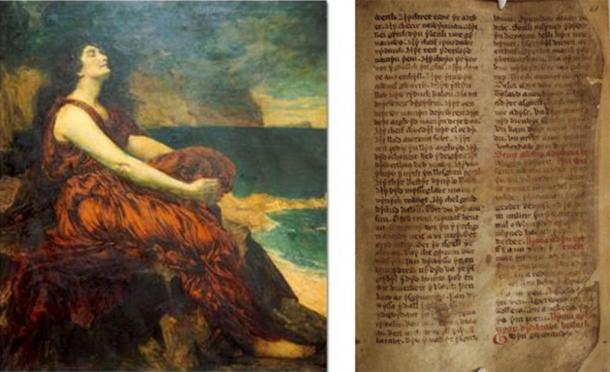
Branwen, on the left, is one of the most tragic figures from Welsh mythology, is associated with Harlech Castle. ( Public domain ) Right; The Four Branches of the Mabinogion are a collection of Medieval Welsh mythological which include the story of Branwen ferch Llŷr. (National Library of Wales / CC0)
The main character of the legend is Branwen ferch Llŷr (Branwen, daughter of Llŷr). Branwen was the sister of Bendigeidfran (Bran the Blessed), the giant King of Britain, and was given in marriage to Matholwch, the King of Ireland. At the wedding feast, however, Efinisien, Branwen’s half-brother, mutilates the horses given to Matholwch as a dowry, since he was furious that he was not consulted about Branwen’s marriage. This infuriates Matholwch, but Bendigeidfran is able to calm him down by presenting him with more gifts. After the wedding, Matholwch and Branwen return to Ireland, and the latter gives birth to a son. Nevertheless, the mutilation of the horses by Efinisien had not been forgotten, and the king was urged to avenge this insult.
As a result, Matholwch banishes his wife to his kitchen, where she is forced to work as a servant. Branwen suffers further humiliation by being slapped by the butcher every day. The princess manages to tell her brother of the terrible treatment she was receiving by sending a bird to him. Consequently, Bendigeidfran assembled his army, and attacked Ireland. The Irish were defeated, and Matholwch tries to make peace by offering the throne to their son, Gwern. In fact, he was plotting to kill the Britons at the coronation feast. The plot, however, was discovered by Efinisien, who foils it by throwing Gwern into the fire, thus causing the Irish and Britons to fight once more. In the end, only seven Welshmen survived, and Branwen returns to Wales with them. The princess’ heart was broken at the thought that two kingdoms were destroyed on her account, and she dies soon after.
Edward, the Vindictive King
Although Harlech is associated with the legend of Branwen, there is no evidence that there was a castle at the site before the 13 th century. In 1272, the English king, Henry III, died, and was succeeded by his son, Edward I . At the time of Edward’s ascension, much of Wales was under the rule of Llywelyn ap Gruffudd , the Prince of Wales . Edward, however, was determined to reduce Llywelyn’s power. The prince’s persistent evasion of his duty to pay homage to the English king was used by Edward as a convenient excuse to conduct a military campaign against Wales. Thus, in 1277, Edward invaded Wales, defeated the Welsh, and forced Llywelyn to sign the Treaty of Aberconwy. Although the Welsh leader was allowed to keep his title ‘Prince of Wales’, he lost much territory, and was left only with the western part of Gwynedd.
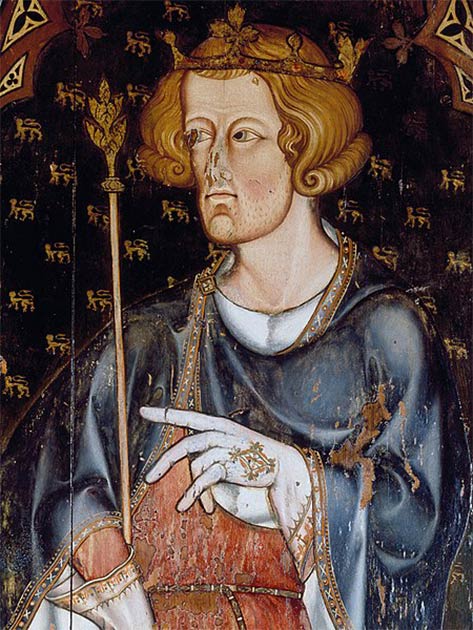
Edward I was determined to reduce the power of Llywelyn ap Gruffudd and invaded wales in 1277. ( Public domain )
In 1282, the Welsh, who were dissatisfied with English rule, rebelled. Initially, there were only sporadic outbreaks of resistance. Soon, however, it turned into a united uprising, and Llewelyn eventually became the leader of the rebellion. Under Llewelyn’s leadership, important castles were captured, and the English army was defeated. In response, Edward assembled his army, and invaded Wales again. The Welsh used guerrilla tactics against the much larger English army, and enjoyed some success. At the Battle of Irfon Bridge, however, Llewelyn was slain. This was a heavy blow to the Welsh, but they continued their resistance under Dafydd, Llywelyn’s brother. The resistance crumbled in 1283, when Dafydd was captured, tried, and executed.
Master Architect of Harlech Castle
Harlech Castle was built at the time of Edward’s second Welsh campaign. Construction of the castle began in 1283, and was completed in 1290. It was meant to be part of an ‘iron ring’ of castles that surrounded the coastal fringe of Snowdonia. This ‘iron ring’ included Conwy Castle and Caernarfon Castle, and the entire project was placed in the hands of James of Saint George, a master architect from Savoy. Like Conwy and Caernarfon Castles, Harlech Castle was designed to have access to the Irish Sea. This was meant to ensure that the castle’s defenders would be able to obtain supplies and reinforcements in the event of a land assault. Unlike the other two castles, however, Harlech Castle is situated in place of little strategic importance. It has been suggested that the Edward deliberately constructed this formidable castle in such a remote location as a display of his power to the Welsh.
Harlech Castle was built to be a mighty fortress, and the genius of its architect reflected in its design. For a start, James chose the edge of a prominent cliff as the site to build the castle. This meant that any would-be attacker would be forced to approach the castle from the east. As already mentioned, the castle has direct access to the Irish Sea, which is reached via a gated, fortified stairway. Harlech Castle is a concentric castle, which means that relied on curtain walls, rather than a keep, as its main system of defense. Therefore, Harlech Castle has two rings of walls, each reinforced by towers.
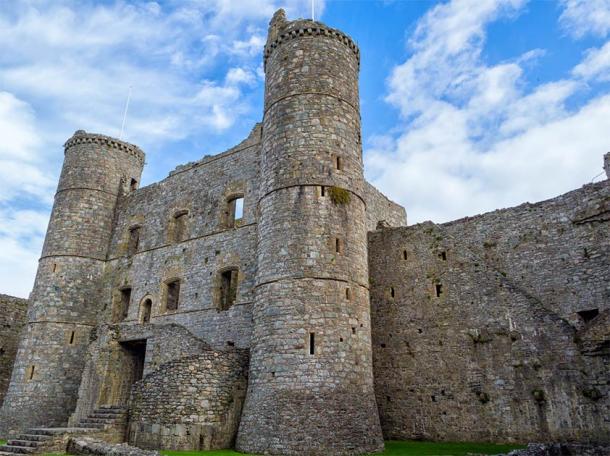
The gatehouse of Harlech Castle. ( hipproductions / Adobe Stock)
On the eastern side of the castle is a massive gatehouse, which would have served to intimidate any would-be-attacker. The gatehouse was not merely a defensive structure, but also the castle’s main private accommodation. The first floor of the gatehouse would have served as personal residence of the castle’s constable or governor, whilst its top floor would have been reserved for visiting dignitaries. It may be added that this was also the case for the corner towers, i.e. that they were not only used for defensive purposes, but also provided accommodation for the castle’s residents.
Although Harlech Castle is defended by massive curtain walls, its inner ward is considered to be somewhat smaller than what one might imagine. Nevertheless, it contains all the amenities that the castle’s inhabitants may need. These include a kitchen and great hall against its western wall, a chapel and bakehouse against its northern wall, and a granary and another hall against its southern wall. Interestingly, this hall, which is known as Ystumgwern Hall, is believed to have originally belonged to Llywelyn. It was located to the south of Harlech, and after the Welsh prince’s defeat, was dismantled, brought to the castle, and reassembled there. It seems that Edward did a similar thing at Conwy.
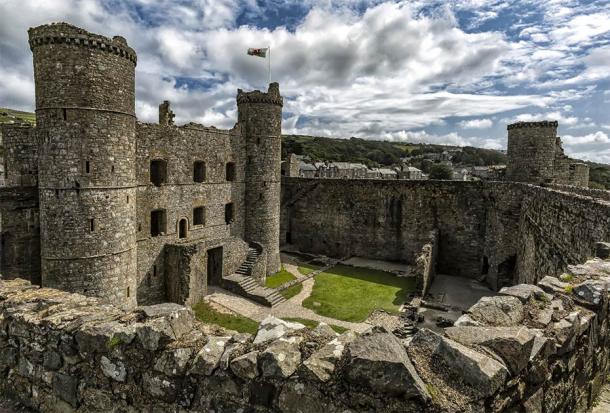
The inner walls of Harlech Castle. ( Fulcanelli / Adobe Stock)
Turbulent Times for Harlech Castle
Harlech Castle saw much action in the centuries that followed. In 1294, not long after the castle was completed, the Welsh rebelled once again. This time, they were led by Madog ap Llywelyn, one of Llywelyn’s distant relatives. Harlech Castle was deep in Welsh-held territory. Nevertheless, its defenders were able to hold on to the castle throughout the rebellion, which lasted until 1295. One of the primary reasons for this was the castle’s access to the Irish Sea. In 1404, the Welsh revolted once again. This time, Harlech Castle, which was defended by a small, poorly-equipped garrison, fell to the Welsh after a long siege. The Welsh leader, Owain Glyndŵr , was proclaimed Prince of Wales, and made the castle his main residence and military base. Additionally, a parliament is believed to have been held in Harlech Castle by Owain in 1405.
In 1408, Harlech Castle was besieged by Henry of Monmouth, the future Henry V, and his commander, Edmund Mortimer. The English brought artillery with them, and it is thought that the southern and eastern parts of the outer walls were destroyed during this siege. Nevertheless, the Welsh defenders continued to resist, and only surrendered to the English in February 1409, due to lack of supplies and exhaustion. But, it was not too long before Harlech Castle saw action once more. The Wars of the Roses broke out between the House of Lancaster and the House of York in 1455. Five years later, Margaret of Anjou, the wife of the English king, Henry VI, sought shelter at Harlech Castle, thereby turning it into a Lancastrian stronghold. As the civil war progressed, the castles of the Lancastrians fell to the Yorkists one by one. In the end, Harlech Castle was the last main fortress that the Lancastrians controlled. The castle had been under siege since 1461, but its defenders were able to survive thanks again to its access to the Irish Sea.
In 1468, Edward IV ordered William Herbert to capture Harlech Castle. After a month-long siege, the castle’s defenders surrendered to the Yorkists. It has been suggested that the courage of the castle’s defenders during this siege inspired the song Men of Harlech . Alternatively, it has been speculated that the song is actually associated with the Welshmen who defended Harlech Castle against the English in 1408. In any event, after the siege of 1468, Harlech Castle was abandoned. Records from the 16 th century show that the castle ‘s defensive and domestic equipment had been removed. The towers’ interiors were in ruins, whilst the chapel and hall were left roofless. Furthermore, Harlech Castle was repurposed as a debtors’ prison.
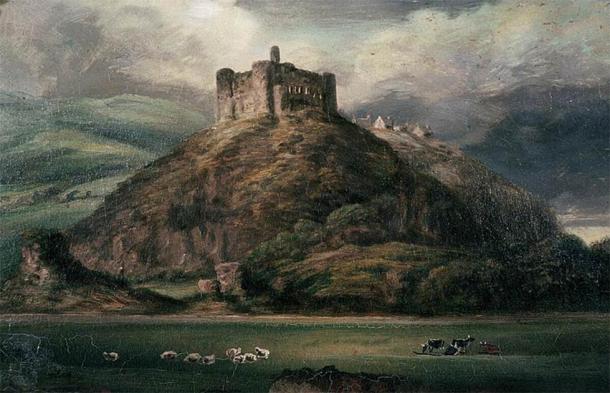
Harlech Castle has borne witness to a violent history of war and rebellion. ( Public domain )
Harlech Castle regained its defensive function during the 17 th, when the English Civil War broke out between the Royalists and Parliamentarians. A royal army took possession of Harlech Castle, and its commander, William Owen, had the castle repaired. Harlech Castle was besieged again in June 1646, four years after the war started. By this time, it was the last castle on the mainland in the hands of the Royalists. The siege lasted until March 1647, when its garrison of 44 men surrendered to the Parliamentarians under Thomas Mytton. Following its capture, Parliament ordered Harlech Castle to be demolished, so as to prevent it from being used by the Royalists in the future. Fortunately, the order was only partially carried out, and hence much of the structure was spared.
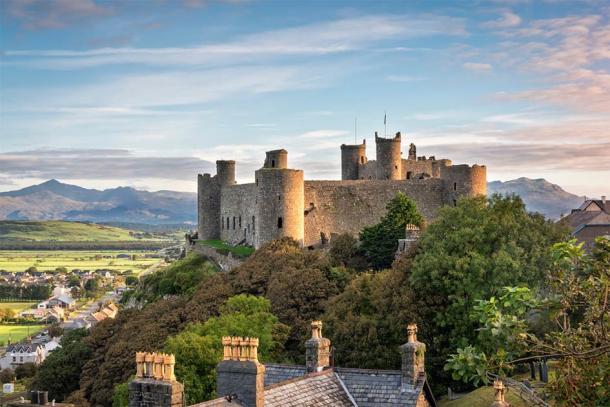
Harlech Castle, Gwynedd, Wales ( valeryegorov / Adobe Stock)
Time for Peace at Harlech Castle
The siege of 1646 was the last time Harlech Castle saw action. In the next centuries, the castle was abandoned once again. The 19 th century saw the transformation of Harlech Castle into a tourist destination. The violent history of the castle seems to have faded away. Instead of armies, the site was now visited by artists, who were drawn there by the scenic natural landscape. The popularity of Harlech Castle amongst artists of that period is evident by the many paintings, drawings, and engravings that were made of the castle and its surrounding area. Harlech Castle has maintained its role as a tourist destination till this day. Harlech Castle has been restored during the 20 th century, though these works were minimal so as to preserve the castle’s pristine state.
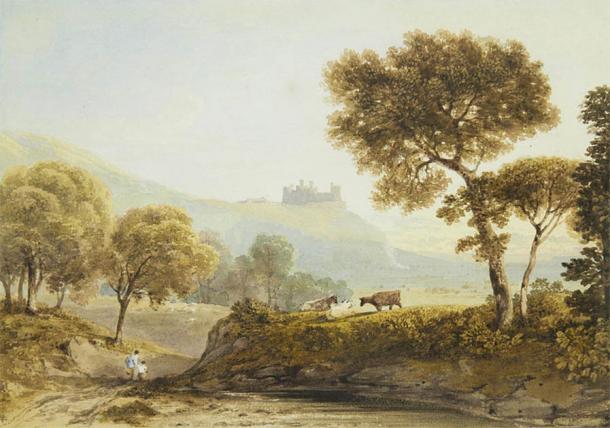
Harlech Castle became a popular destination for artists from the 19th century, attracted by its beauty and the surrounding landscape. Watercolor of Harlech Castle by Copley Fielding (1855). ( Public domain )
Today, in addition to being a tourist destination, Harlech Castle is also an important piece of cultural heritage. Although parts of Harlech Castle have been destroyed by the passage of time, and by human hands, it is still considered to be one of the best-preserved castles in Wales. Internationally recognition for the site’s significance came in 1986, when the castle was inscribed as a UNESCO World Heritage Site , as part of the ‘Castles and Town Walls of King Edward in Gwynedd’. Apart from Harlech Castle, the group includes three other Welsh castles – Beaumaris, Conwy, and Caernarfon Castles.
Top image: It may not seem like it today, but Harlech Castle is Wales has witnessed Welsh rebellions, the Wars of the Roses and the English Civil War. Source: Darren Tennant / Flickr
By Wu Mingren
Saudi Arabia Is Breaking Away From The Dollar System – Shock In Davos!
Turkey Stuffing Soup
Don’t let a bit of that tasty Thanksgiving meal go to waste. Everyone will love this delicious soup.

Ingredients
- 1 roasted turkey carcass, broken into pieces
- 10 cups cold water
- 3 carrots, thickly sliced
- 3 celery stalks with leaves, sliced
- 1 onion, chopped
- 1/2 cup chopped parsley
- 1 bay leaf
- 1 teaspoon dried thyme, crushed
- 2 1/2 cups leftover turkey stuffing or dressing
- 2 cups turkey gravy
- Salt
Instructions
- Combine turkey carcass, water, carrots, celery, onion, parsley, bay leaf, thyme, stuffing, gravy and salt in a stock pot pot. Place over medium heat and bring to boil, then reduce heat to simmer. Stir and break up all clumps of stuffing. Simmer, covered, about 1 1/2 hours.
- Remove carcass, saving any meat that can be stripped, and add up to 1 1/2 cups water if necessary to replace evaporation.
- Adjust salt to taste.
- Let simmer for 10 more minutes.
- Serve hot.
Cat meme

Big Feelings: How to Be Okay When Things Are Not Okay by Liz Fosslien

Liz Fosslien (previously featured) is the co-author and illustrator of the book Big Feelings and the Wall Street Journal best-seller No Hard Feelings. Liz is an expert on how to make work better.
She regularly leads interactive, scientifically-backed workshops about how to build resilience, help remote workers avoid burnout, and effectively harness emotion as a leader. Her work has been featured by TED, Harvard Business Review, The New York Times, The Economist, and NPR.
“We all experience unwieldy feelings. But between our emotion-phobic society and the debilitating uncertainty of modern times, we usually don’t know how to talk about what we’re going through, much less handle it. Over the past year, Liz Fosslien and Mollie West Duffy’s online community has laughed and cried about productivity guilt, pandemic anxiety, and Zoom fatigue. Now, Big Feelings addresses anyone intimidated by oversized feelings they can’t predict or control, offering the tools to understand what’s really going on, find comfort, and face the future with a sense of newfound agency.”


































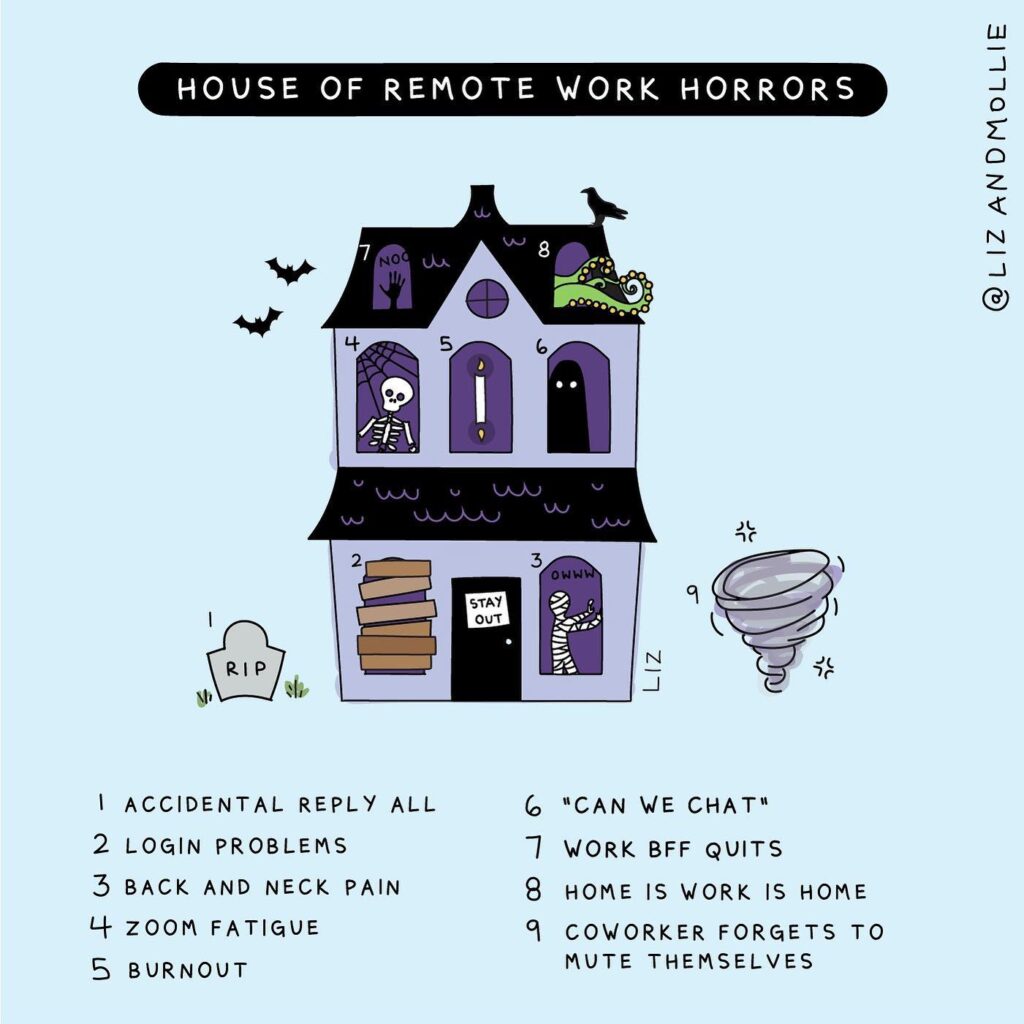




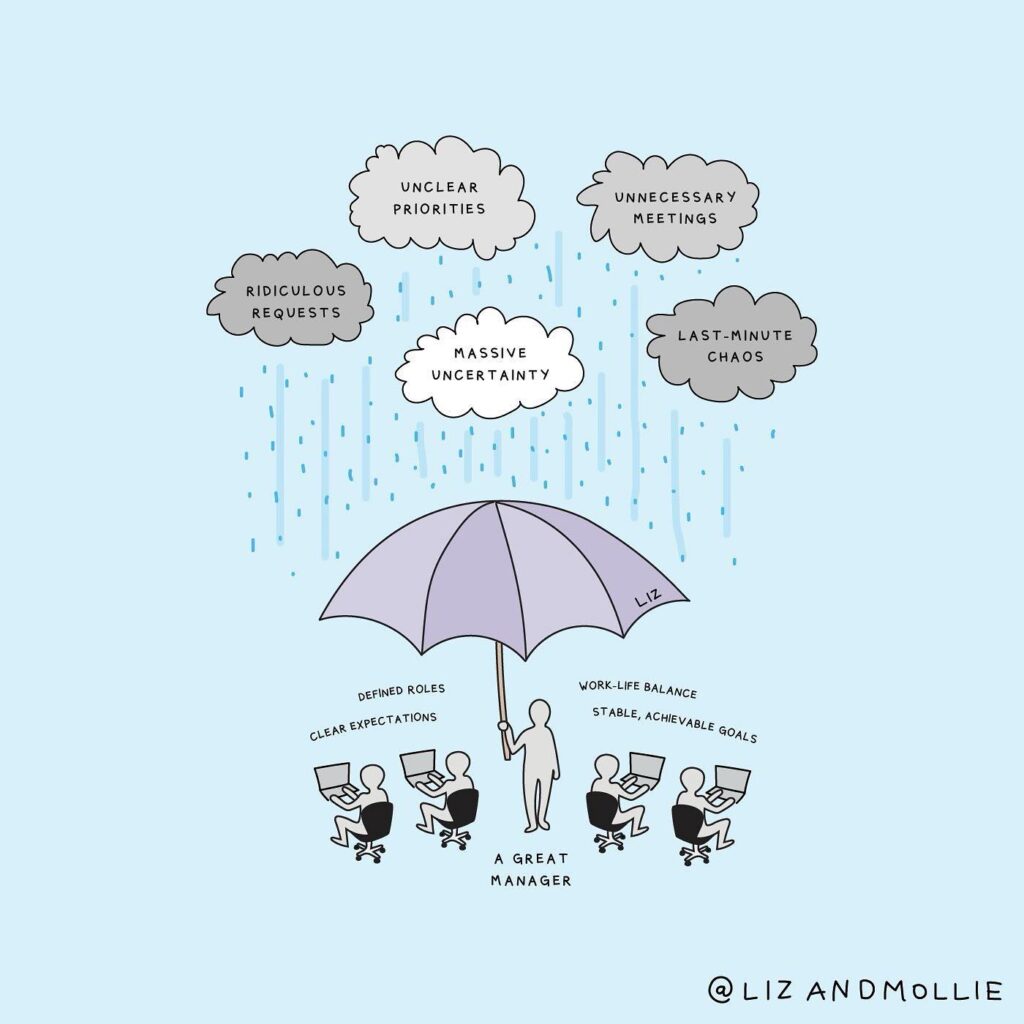




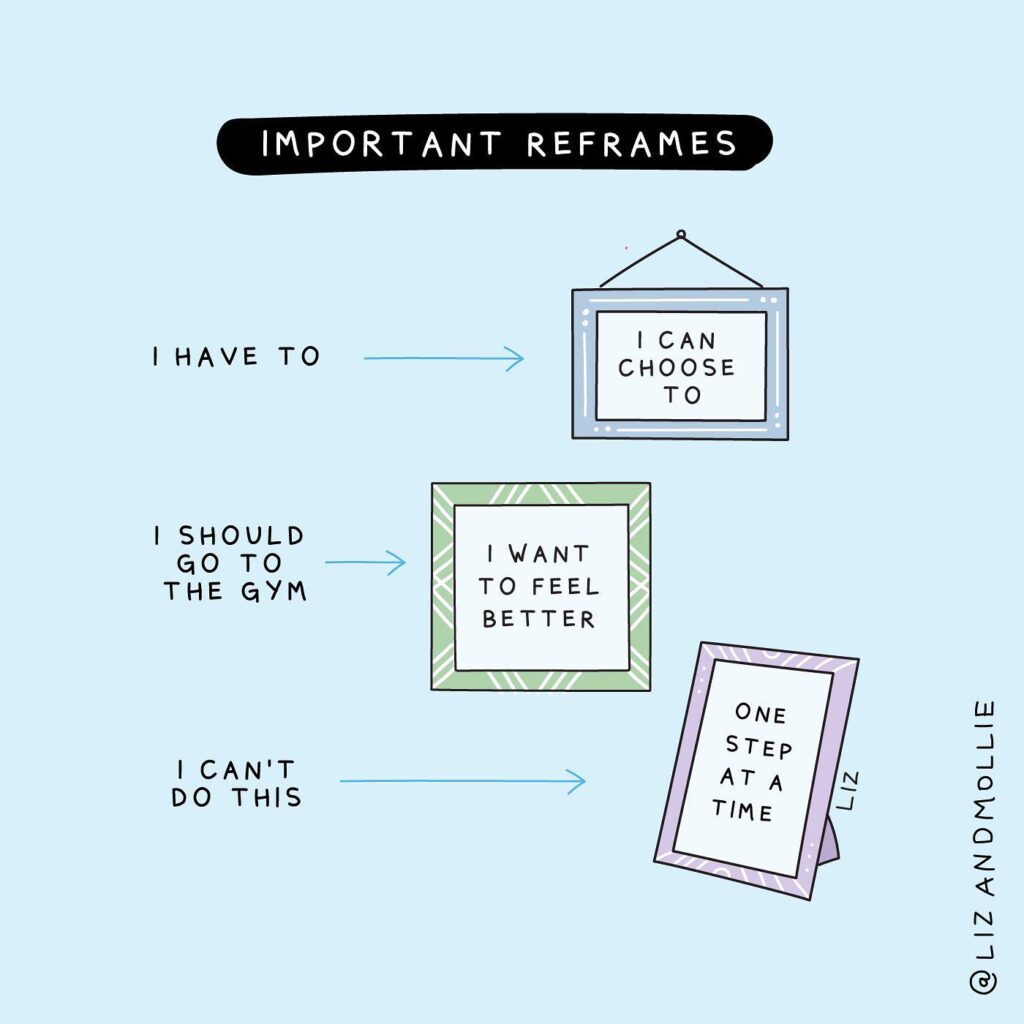

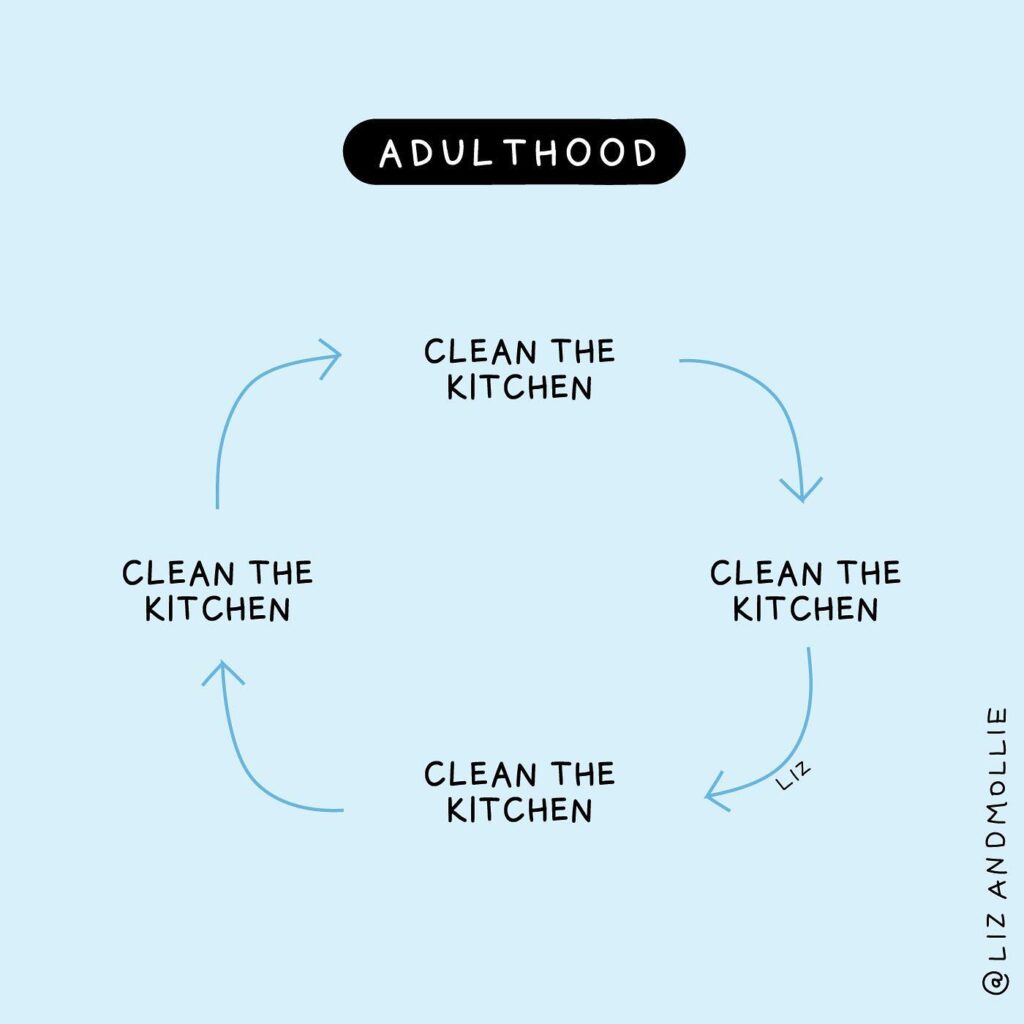
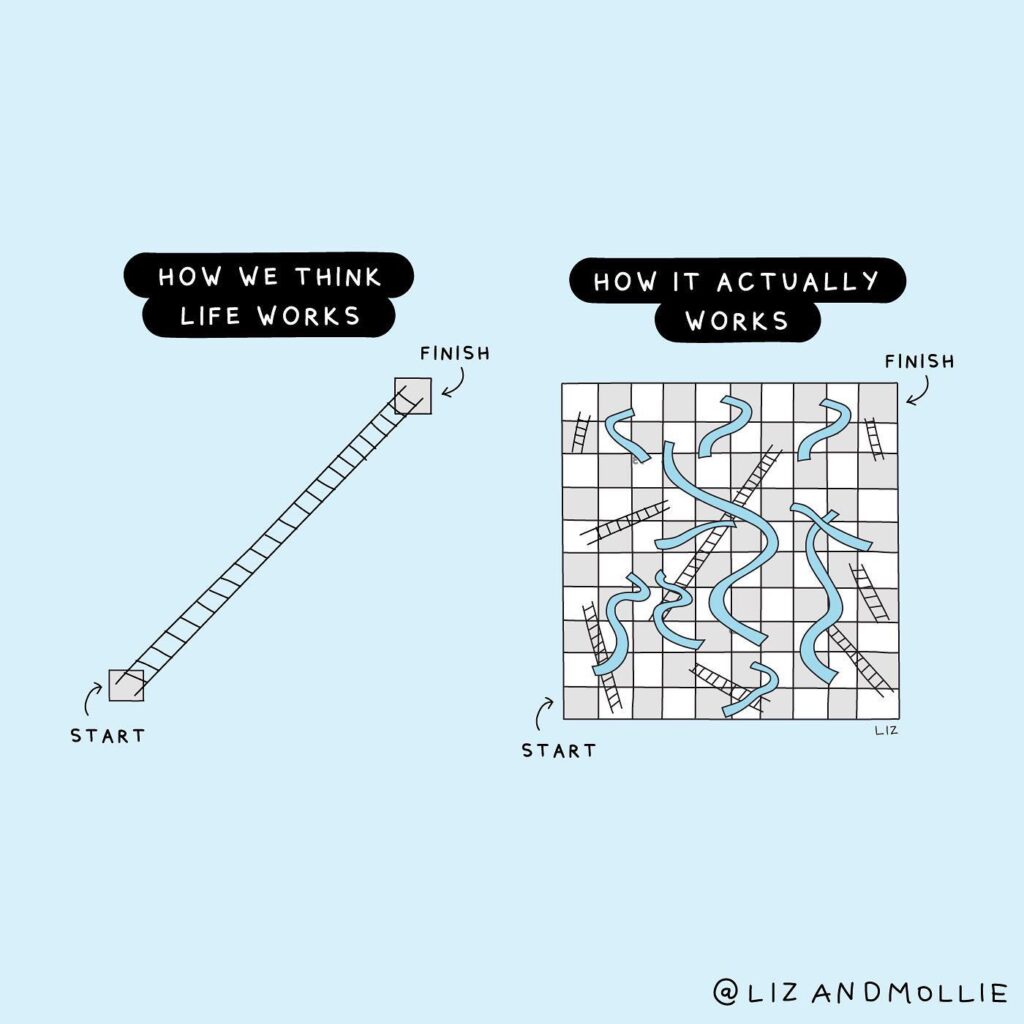



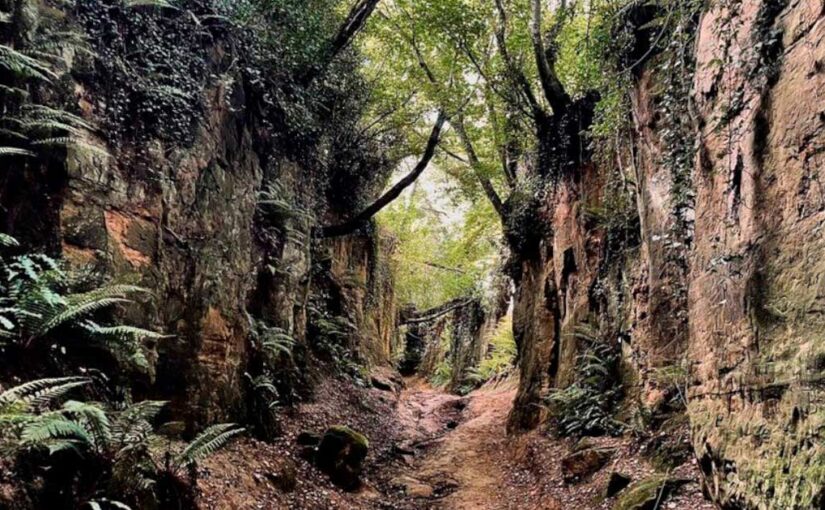


It’s beyond ironic and extremely comedic that America decryies China’s Belt Road Initiative as Debt Trap Diplomacy when they have ruined countless economies AND lives through THEIR debt traps (The Housing Bubble, the Dot Com Bubble, the Roaring Twenties, all precipitated by predatory borrowing/credit policies and propaganda to incentivize citizens into participating.
It fills me with bile to see so many intelligent westerners and journalists to cite this Swill when attempting to besmirch China’s attempts at giving reliable infrastructure to nations that have long been deprived of it by the West.
The power of positive thought hey mate, my glass is always half full never half empty. Life’s problems are like a granite pillar, they may seem impossible to overcome but even the smallest hammer over time will fell the hardest granite pillar every time.